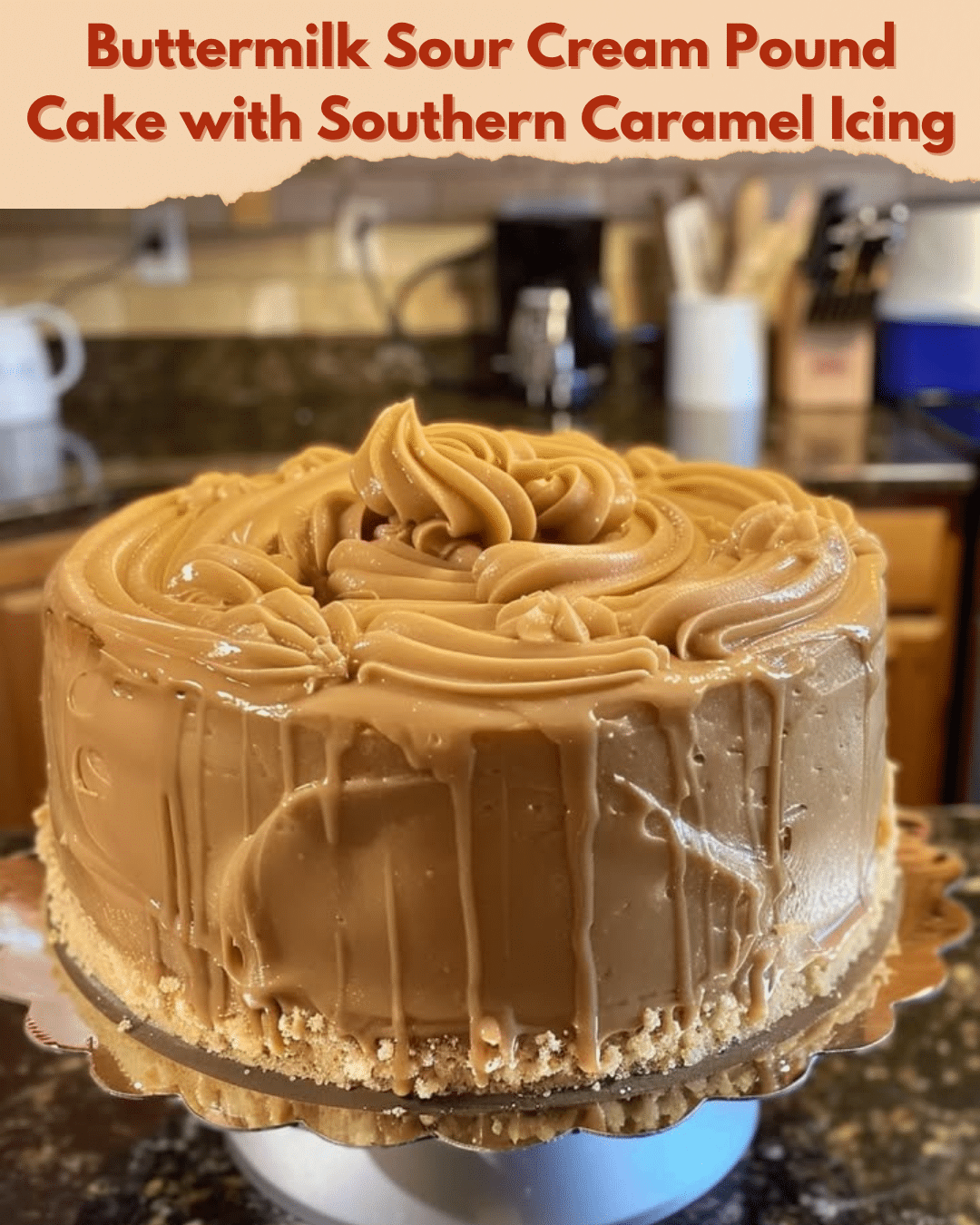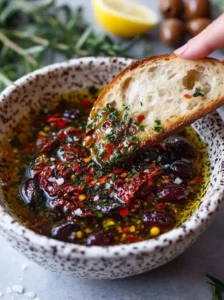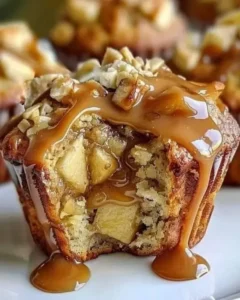Buttermilk Sour Cream Pound Cake with Southern Caramel Icing: A Southern Delight
Indulge your taste buds with the irresistible combination of buttermilk sour cream pound cake topped with luscious Southern caramel icing. This classic Southern dessert is not just about its rich flavors but also the comforting experience it offers. Imagine a dense yet tender pound cake, its moist crumb perfectly balancing tangy buttermilk and rich sour cream, crowned with a silky caramel glaze that adds the perfect touch of sweetness. Whether you are hosting a family gathering or celebrating a festive occasion, this cake is bound to be a standout delight.
Quick Recipe Highlights
- Flavor Profile: This cake masterfully blends the tanginess of buttermilk and sour cream with the deep sweetness of caramel icing, creating a harmonious balance that’s truly indulgent.
- Texture: Experience the delight of a moist and buttery crumb, contrasted with the smooth and glossy layer of caramel icing that adds a delightful finish.
- Aroma: As the cake bakes, your kitchen will fill with the comforting aroma of vanilla and caramel, inviting everyone to the table.
- Visual Appeal: With its golden-brown exterior and glossy caramel icing, this cake is as visually inviting as it is delicious, making it perfect for any occasion.
- Skill Level Needed: While the recipe requires a bit of precision, it’s accessible to most home bakers with some experience. Mastering the caramel frosting may take a bit more practice.
- Special Equipment: A stand mixer and a nonstick Bundt cake pan will help achieve the best results for this pound cake and icing.
Recipe Overview
- Difficulty Level: The cake itself is relatively straightforward, requiring careful measurement and mixing. The real challenge lies in the caramel icing, which demands precision and attention to temperature.
- Category: This indulgent delight falls under dessert, offering a rich finish to any meal with its blend of sweet and tangy notes.
- Cuisine: Rooted in Southern traditions, this recipe exemplifies the classic flavors and techniques of Southern baking.
- Cost: Estimated at moderate cost, with buttermilk, sour cream, and quality vanilla extract being the primary drivers of cost.
- Season: Ideally enjoyed year-round, this cake shines during cooler months when cravings for comforting, baked goods are at their peak.
- Occasion: Perfect for family gatherings, holiday celebrations, and any occasion where a traditional, crowd-pleasing dessert is required.
Why You’ll Love This Recipe
The buttermilk sour cream pound cake with Southern caramel icing is a recipe that captivates with its taste and texture. The cake’s soft and moist crumb harmonizes beautifully with the rich and sweet caramel glaze. This combination delivers a delightful blend of sweetness and tanginess in every bite.
Convenience is another aspect where this recipe shines. With simple ingredients readily available in most kitchens, the preparation is straightforward. The cake base requires basic mixing and baking skills. While the caramel icing adds a step, it’s manageable with careful attention.
Nutritionally, this cake isn’t just empty calories. The use of buttermilk and sour cream provides an excellent source of calcium and protein, while eggs enrich it with additional nutrients. Of course, moderation is key to enjoying its decadent flavor.
In social settings, this cake is a standout treat. Its classic Southern roots evoke a sense of nostalgia, making it ideal for gatherings where you want to impress with a homemade dessert that feels both familiar and special.
Cost-effectiveness and accessibility are significant benefits. The ingredients are not only easy to find, but the cost remains moderate, making it a recipe that’s both budget-friendly and satisfying for any home baker looking to delight their family and guests.
Historical Background and Cultural Significance
Pound cakes have long been a staple in Southern cuisine, where the buttermilk sour cream pound cake with Southern caramel icing has carved out a special place. Originating from the basic pound cake formula of equal parts flour, butter, eggs, and sugar, the addition of buttermilk and sour cream adds a unique tangy flavor profile and rich texture to this beloved dessert.
In Southern culture, desserts like this pound cake hold significant importance in family gatherings and community events. They symbolize hospitality and warmth, key pillars of Southern culinary tradition, tracing back to times when shared meals were the heart of communal life.
Over the years, the recipe has evolved with variations across different Southern regions. While some prefer a simple glaze, others add the intricate Southern caramel icing, lifting the cake from ordinary to extraordinary. This caramel variant underscores the creativity and adaptability that Southern cooks have brought to classic recipes.
Regional variations of this recipe may include nuts or seasonal fruits, demonstrating the versatility and adaptability of the basic recipe to suit various tastes and occasions. These variations reflect the diverse palate and preferences across the Southern United States.
Ingredient Deep Dive
Buttermilk plays a starring role in this cake’s moist texture and tender crumb. Historically used in baking for its acid, which reacts with baking soda to create lift, buttermilk also imparts a subtle tang that balances the sweet richness of the cake. Fresh buttermilk should be chosen for the best flavor and stored in the refrigerator.
Sour cream further enriches the cake, lending a creamy texture while enhancing its moistness. This ingredient adds a distinct tanginess, complementing the buttermilk beautifully. Look for fresh, full-fat sour cream to ensure your cake has the richness it deserves.
Both ingredients, when stored properly, can last in a refrigerator for up to two weeks, although fresher is always better when it comes to baking. If substituting, plain yogurt can act as a stand-in for both buttermilk and sour cream in a pinch, keeping the cake tender while also offering a similar tangy flavor.
Common Mistakes to Avoid
- Overmixing the batter leads to a dense cake. Mix just until ingredients are combined.
- Incorrect oven temperature impacts baking. Always preheat and check your oven’s accuracy with an oven thermometer.
- Skipping the room temperature step. Ensure ingredients are at room temperature for smooth blending and maximum volume.
- Inaccurate measuring of flour results in a dry cake. Use the spoon and level method for precision.
- Neglecting to grease the pan properly can cause sticking. Make sure to oil or butter the pan thoroughly.
- Not following the caramel icing temperature guidance results in either runny or hardened icing.
- Skipping the sifting step for dry ingredients can lead to lumps in your cake batter.
- Using low-fat alternatives affects texture and moisture. Stick with full-fat dairy for best results.
Essential Techniques
Mastering the caramel icing technique is crucial for the perfect finish to this cake. The key is to heat the sugar carefully until it reaches a rich amber color—this stage is known as caramelization and brings out deep, complex flavors while avoiding burning the sugar. Keep an eye on the temperature using a candy thermometer to ensure precision and consistency.
The art of folding gently is another essential skill in this recipe. When combining the wet and dry ingredients, overmixing can lead to gluten development, rendering the cake tough. Instead, use a gentle folding motion to incorporate the dry ingredients into the wet, which helps maintain the cake’s light and tender crumb.
Pay close attention when creaming the butter and sugar. This step should be thorough to incorporate enough air into the mixture for a fluffy cake. The light and airy texture of this stage is a visual cue to look for before moving to the next steps. Utilize medium speed on your mixer for optimal results.
Pro Tips for Perfect Buttermilk Sour Cream Pound Cake
Start with room temperature ingredients to ensure they incorporate smoothly and evenly, leading to a uniform batter. Cold ingredients can result in a lumpy texture that you want to avoid.
Allow the cake to cool in the pan for about 15 minutes before attempting to turn it out. This cooling period helps the cake set slightly, minimizing the risk of it breaking apart.
Give the caramel icing its full time to cool slightly before pouring it over the cake. This delay thickens the icing slightly, controlling its drip for a polished look.
Invest in a quality Bundt pan with a non-stick coating. This investment will help the cake release more easily and result in a visually appealing pattern.
Avoid overbeating the batter once the flour is added. Overbeating can lead to a dense cake due to gluten formation. Mix just until combined.
If you want clearer icing lines, consider using a piping bag. This method offers control over where and how you drizzle your caramel, making for a more refined presentation.
Variations and Adaptations
Regional variations of this cake incorporate local ingredients. In some areas, pecans or walnuts might be added for texture and a nutty contrast to the sweet, creamy caramel icing.
For a seasonal adaptation, consider adding fresh fruits such as sliced peaches or berries to the batter. These fruits not only complement the cake’s sweetness but also introduce refreshing bursts of flavor that are perfect for warmer months.
Dietary modifications can include using gluten-free flour blends to accommodate gluten intolerances, while still maintaining a delightful flavor.
For flavor variations, a hint of lemon zest can be added to the batter to create a citrusy brightness, highlighting the tang of the buttermilk and sour cream.
Texture modifications are achievable by incorporating shredded coconut or chocolate chips into the batter, adding a new layer of surprise in each bite.
Presentation alternatives range from serving the cake as a single Bundt cake to slicing it into individual servings, plated with a drizzle of additional caramel or a scoop of vanilla ice cream.
Serving and Presentation Guide
Serve the cake on a large cake stand to showcase its beautiful Bundt shape and caramel drizzle. When slicing, use a serrated knife for clean cuts and to help maintain the cake’s structure.
Garnishing can be enhanced with a sprinkling of powdered sugar or a scattering of edible flowers to highlight the cake’s surface. Alternatively, a dollop of freshly whipped cream would add a delightful contrast to the cake’s density.
For accompaniments, vanilla ice cream pairs perfectly, its creamy coldness balancing the cake’s rich warmth.
If you’re aiming for a modern touch, serving the cake with a side of caramel sauce and finely chopped, toasted nuts can offer texture contrasts.
They recommend serving this cake at room temperature to allow the flavors to meld, while a cool storage keeps it fresh.
Portion control can be managed by slicing thinly, especially given the cake’s richness and density, ensuring everyone enjoys a taste.
Wine and Beverage Pairing
Pair this cake with a dessert wine, like Moscato, which complements the sweetness and creaminess of the caramel icing.
For non-alcoholic alternatives, a rich, creamy vanilla bean milkshake harmonizes beautifully with the cake’s complex flavors, adding a cooling aspect to the hot caramel notes.
If serving this cake in the afternoon, a cup of rich, aromatic coffee or robust black tea can counterbalance its sweetness while enhancing the overall sensory experience.
Serve chilled wines and beverages to create a nice contrast with the warm flavors of the cake, resulting in a balanced tasting experience.
For serving suggestions, consider offering a selection of beverages so that guests can choose their perfect pair, whether it’s a sweet wine or a coffee.
Storage and Shelf Life
Store the cake in an airtight container at room temperature for up to three days, maintaining its moistness without going stale. If you’ve glazes it with caramel, room temperature storage is ideal to prevent softening.
For longer storage, refrigerate the cake, where it can remain fresh for up to a week. Always bring it back to room temperature before serving for the best taste and texture.
Use parchment paper between slices if stacking in storage containers to avoid sticking and preserve the icing’s appearance.
Signs of spoilage start with a dry crumb or discolored icing. Discard if an off smell or mold develops, indicating the cake is no longer safe to eat.
For reheating, consider using a toaster oven or warm pan for slices so that they maintain a slight crisp on the outside while the inside remains moist.
Freezing is effective for longer storage. Wrap individual slices in plastic wrap and store them in resealable bags to protect against freezer burn, extending shelf life up to three months.
Make Ahead Strategies
Prepare the cake up to two days ahead, keeping it stored in an airtight container to preserve freshness. The flavors meld beautifully after sitting for a day or two, enhancing its richness.
Caramel icing can be made before and stored separately, to be gently reheated before glazing the cake.
If assembling on the day of serving, bake and cool the cake fully before applying the icing. This ensures the caramel won’t run off due to residual warmth from the cake.
Adding a sprinkle of sea salt or fresh fruit just before serving can refresh the flavors and add a modern twist.
For reheating guidelines, make sure the cake is at room temperature before reheating, to avoid the caramel icing from hardening too much while heating.
Integrating fresh flowers or herbs as a décor option in serving can introduce a natural and seasonal element for special occasions.
Scaling Instructions
When halving the recipe, use a smaller Bundt pan or loaf pan to maintain the right cake shape and baking time.
Doubling or tripling requires careful mixing and potentially larger equipment. Consider using a larger mixer bowl to accommodate the increased batter.
Adjust baking time by keeping an eye out for visual cues like browning edges and a clean toothpick when inserted.
Storage space increases as well. Larger batches can be sectioned and frozen, following proper storage and reheating instructions to ensure quality remains high.
For equipment, bigger batches necessitate larger mixing bowls and storage containers, so plan accordingly.
Timing in a double batch may extend slightly, but typically shouldn’t double, as the cake’s thickness remains similar.
Nutritional Deep Dive
This cake is a rich source of carbohydrates and fats, with its primary ingredients being flour, sugar, and butter. These components contribute to its calorie-rich profile.
While high in calories, the cake also provides valuable micronutrients from eggs and dairy, including vitamin A and calcium, contributing to daily nutritional needs.
Moderate portions are advisable due to its high fat and sugar content, making it a treat rather than a staple.
Dietary considerations should include monitoring portion sizes for those on calorie-controlled diets while enjoying an occasional indulgence.
Analyzing portions, a thin slice pairs well with lighter meals earlier in the day to balance caloric intake throughout.
For weight-conscious individuals, reducing the size of slices allows enjoyment of the cake’s luscious flavors without overindulgence.
Dietary Adaptations
For a gluten-free adaptation, use a reliable gluten-free flour blend in place of regular flour. Ensure the blend includes xanthan gum for texture.
Dairy-free options include substituting coconut milk and coconut yogurt for buttermilk and sour cream, creating a slightly different but still delicious variation.
Vegan adaptations involve replacing eggs with flaxseed meal and water, and using plant-based alternatives for dairy products.
For those following a low-carb or keto diet, consider almond flour and erythritol as replacements for flour and sugar, respectively.
Paleo-friendly versions can also incorporate coconut-based products, aligning with the diet’s focus on whole foods.
For a low-FODMAP version, verify that ingredients like dairy are lactose-free, minimizing intolerance symptoms while maintaining flavor.
Strong overall differences in texture and flavor may occur, but adjustments allow most dietary needs to be supported.
Troubleshooting Guide
Texture issues with dryness often come from overbaking. Keep a close eye on the baking time, relying on toothpick tests.
If the cake lacks flavor balance, verify measurements are correct, especially for sugar and vanilla, which significantly impact taste.
Temperature problems often stem from oven inconsistencies. Use an oven thermometer to ensure correct, consistent heat.
Equipment challenges, like sticking pans, require thorough greasing and flouring of the Bundt pan to avoid tearing the cake.
Ingredient substitutions result in varied textures. Experiment with previous variations to achieve the desired crumb.
Timing concerns focus on cooling the cake properly before icing to ensure its integrity and visual appeal remain intact.
Recipe Success Stories
From reader feedback, this cake dazzles at gatherings, with many sharing how its flavors resonate with family and friends, creating memorable experiences.
Successful regional adaptations reflect incorporating local ingredients like pecans or seasonal fruits, adding depth and personal twists to the classic recipe.
Beyond simple adaptation, some readers elevate the cake aesthetically by expertly drizzling the caramel icing for an air of elegance and sophistication.
Reader suggestions often involve creative toppings or incorporating personal family touches, enhancing the overall presentation and flavor depth of the cake.
For photography tips, readers suggest focusing on close-ups of the caramel drizzles to showcase the cake’s flavor appeal visually, leading to more enticing documentation of this dessert.
Frequently Asked Questions
What makes this cake moist?
The combination of buttermilk and sour cream provides moisture and richness, keeping the cake soft and tender. Proper mixing and not overbaking are also essential to maintaining its moistness.
Can I make the cake ahead of time?
Yes, you can bake it up to two days in advance. Store it in an airtight container at room temperature, and apply the caramel icing before serving for best results.
Is there a substitute for buttermilk if I’m lactose intolerant?
For a lactose-free option, you can use lactose-free buttermilk or a homemade version using lactose-free milk combined with lemon juice or vinegar.
How can I prevent the cake from sticking to the pan?
Grease the Bundt pan thoroughly with butter or non-stick spray. Then dust it with flour, shaking out the excess to ensure an even, non-stick surface.
What do I do if the caramel icing is too thick?
If your caramel icing becomes too thick, gently reheat it while stirring until it reaches the desired consistency for easy drizzling.
Can I use store-bought caramel sauce instead of homemade?
Yes, you can use store-bought caramel, though homemade offers a richer, more controlled flavor and consistency. Ensure the store-bought variety is smooth enough to pour.
What’s the best way to store leftover cake?
Wrap leftover slices in plastic wrap or place them in an airtight container. Store at room temperature for up to three days or refrigerate for up to a week.
What should I do if I don’t have a Bundt pan?
You can bake in two standard loaf pans or a 9×13-inch pan. Adjust the baking time as needed and monitor for doneness with a toothpick.
How can I add a decorative touch to this cake?
Consider dusting with powdered sugar, sprinkling chopped nuts on top, or garnishing with fresh fruits or edible flowers for a festive touch.
Why didn’t my cake rise evenly?
Ensure that your baking powder and baking soda are fresh. Additionally, evenly spreading the batter before baking helps promote balanced rising.
Can I freeze this cake for longer storage?
Yes, freezing is effective. Wrap slices individually in plastic wrap and store in a freezer-safe container to maintain freshness for up to three months.
Additional Resources
Dive into related recipes like Southern biscuits or cornbread, which pair beautifully with the cake for a full Southern-inspired meal.
Technique guides covering basic caramel preparation will deepen your understanding of achieving that perfect caramel glaze for any dessert.
Ingredient information focusing on dairy substitutes can help those with intolerances adapt this and other recipes with ease.
Consider equipment recommendations like non-stick pans and candy thermometers to elevate your baking success and ensure consistent, quality results.
Explore seasonal variations for using fruits from local farmers’ markets in the cake, adding both flavor and visual appeal to the traditional recipe.
Print
Buttermilk Sour Cream Pound Cake with Southern Caramel Icing
Description
A rich and moist pound cake with a delightful Southern caramel icing.
Ingredients
For the Crust:
- 2 cups all-purpose flour
- 1 cup unsalted butter, softened
- 1 cup granulated sugar
- 1/2 cup sour cream
- 1/2 cup buttermilk
- 3 large eggs
- 1 teaspoon vanilla extract
- 1 teaspoon baking powder
- 1/2 teaspoon salt
- For the Caramel Icing: 1 cup brown sugar
- 1/2 cup heavy cream
- 2 tablespoons unsalted butter
- 1 teaspoon vanilla extract
Instructions
1. Prepare the Crust:
- Preheat the oven to 350°F (175°C) and grease a 9×5-inch loaf pan.
- In a large bowl, cream the butter and sugar until light and fluffy. Mix in the eggs one at a time, then stir in the vanilla extract.
- In a separate bowl, whisk together the flour, baking powder, and salt. Gradually add to the batter alternately with the buttermilk and sour cream, beginning and ending with the flour mixture.
- Pour the batter into the prepared pan and bake for 60-70 minutes or until a toothpick inserted into the center comes out clean. Let cool in the pan for 10 minutes, then turn out onto a wire rack to cool completely.
- To make the caramel icing, combine the brown sugar, cream, and butter in a saucepan over medium heat. Bring to a boil and let it cook for 1 minute, then remove from heat and stir in vanilla.
- Pour the caramel icing over the cooled cake.
Notes
You can customize the seasonings to taste.





